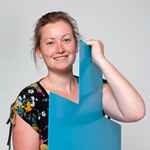New UvA elective: Pandemic
The coronavirus outbreak placed into the largest possible context
9 June 2020

We often get caught up in the day-to-day treadmill of existence due to current events and stress, and feel there is no room to zoom out so we can view the situation with a broader outlook. Someone who does do that, however, is Big History lecturer Esther Quadackers (UvA). We talked to her.
‘During the course, questions will be raised, such as: How does the coronavirus pandemic fit into the bigger picture? How is the virus developing at different levels, from the cellular to the global? How have viruses developed at all these levels in the past? And which lessons can we draw from this for the future? This extremely interdisciplinary course attempts to answer these questions by bringing together and connecting insights from a broad range of disciplines, from virology and evolutionary biology to geopolitics and human history.
This course is therefore about the role that viruses play and have played everywhere and throughout history. We will zoom out from the here and now and take the time to analyse the larger patterns that will become visible. One of the consequences thereof is that it will become apparent which aspects of the current situation are fairly normal actually and which are unique. Connecting processes that take place on smaller and larger scales of time and space can also lead to other new ideas about the present, and about the future.

We must realise that the history of humanity is not only determined by humanity itself, but also by the minuscule microbes, such as the plague and smallpox. History, and therefore the present and the future, would have turned out differently without these viruses.
Structure of the course: from small to big
‘The course is structured in such a way that we will start with the small and end with the big. In the first week, we will begin with the cell before ultimately ending with the world as a whole in the final week. But we will also go from small to big in each lecture. Every week, two guest speakers will be invited in connection with that week’s theme: one speaker who will talk aboout the theme in the here and now, and one speaker who will place the theme in a broad historical perspective. For example: a guest lecturer who discusses the most recent information about how the coronavirus was able to jump to humans will be followed by a guest lecturer who discusses how viruses jumped from species to species in the past and the impact that had, for example, on early agricultural societies and the first states.
A virus that necessitates distance education
The course will be offered entirely online. All lecturers will record short lectures of 20 to 30 minutes, which participants can watch or listen to at a moment that is convenient for them. However, live contact is also important in this course, both between students, and between students and the lecturers. That is why students will be asked to enter into discussion with each other on the basis of the recordings and to think up a question for that week’s lecturers. These questions will be presented to the two lecturers during a live online Q&A session that will form the basis for further discussion.
Consideration will also be given to making the lecture material available to a broader audience in the form of a podcast.